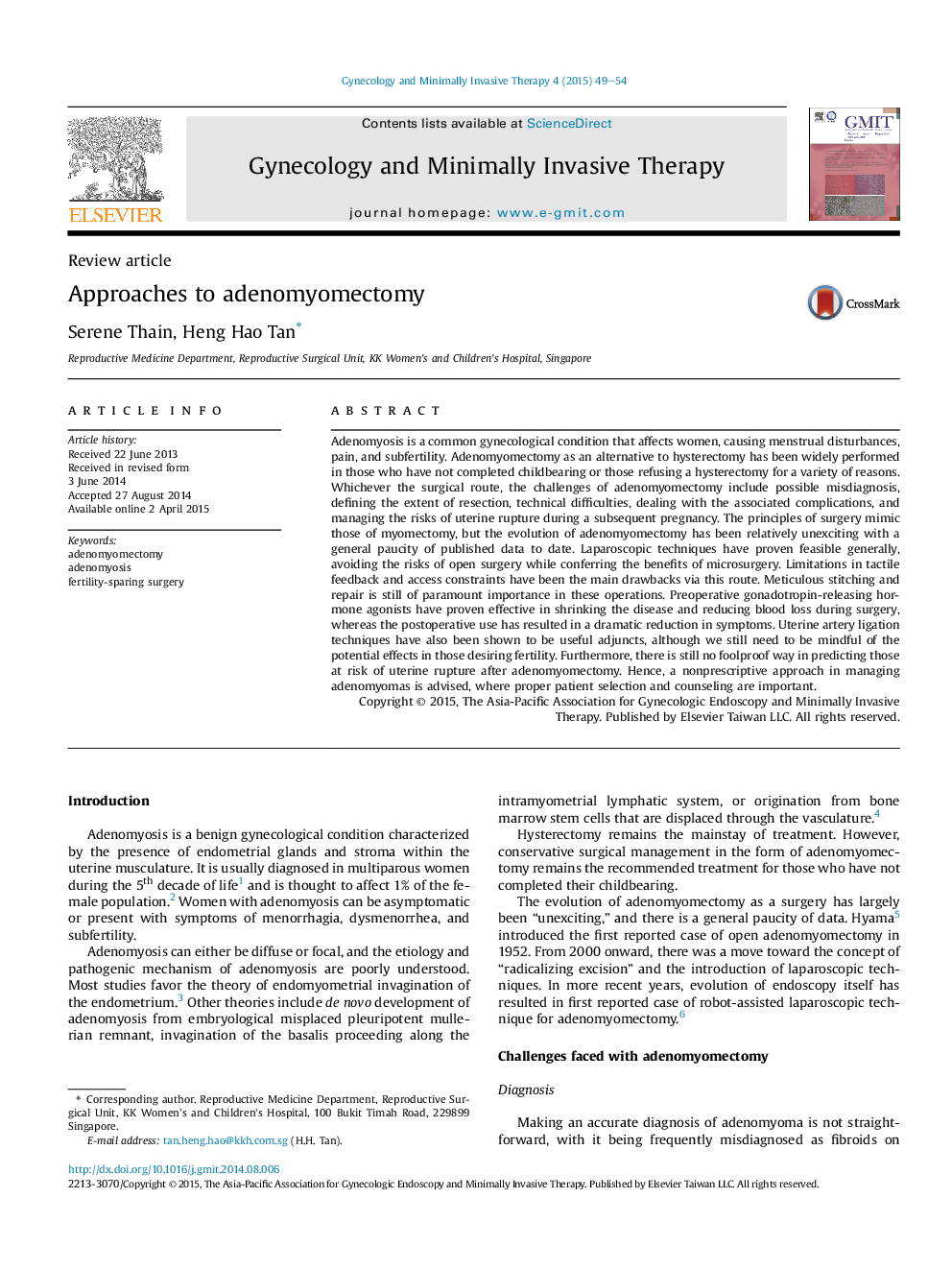| Article ID | Journal | Published Year | Pages | File Type |
|---|---|---|---|---|
| 3953672 | Gynecology and Minimally Invasive Therapy | 2015 | 6 Pages |
Adenomyosis is a common gynecological condition that affects women, causing menstrual disturbances, pain, and subfertility. Adenomyomectomy as an alternative to hysterectomy has been widely performed in those who have not completed childbearing or those refusing a hysterectomy for a variety of reasons. Whichever the surgical route, the challenges of adenomyomectomy include possible misdiagnosis, defining the extent of resection, technical difficulties, dealing with the associated complications, and managing the risks of uterine rupture during a subsequent pregnancy. The principles of surgery mimic those of myomectomy, but the evolution of adenomyomectomy has been relatively unexciting with a general paucity of published data to date. Laparoscopic techniques have proven feasible generally, avoiding the risks of open surgery while conferring the benefits of microsurgery. Limitations in tactile feedback and access constraints have been the main drawbacks via this route. Meticulous stitching and repair is still of paramount importance in these operations. Preoperative gonadotropin-releasing hormone agonists have proven effective in shrinking the disease and reducing blood loss during surgery, whereas the postoperative use has resulted in a dramatic reduction in symptoms. Uterine artery ligation techniques have also been shown to be useful adjuncts, although we still need to be mindful of the potential effects in those desiring fertility. Furthermore, there is still no foolproof way in predicting those at risk of uterine rupture after adenomyomectomy. Hence, a nonprescriptive approach in managing adenomyomas is advised, where proper patient selection and counseling are important.
